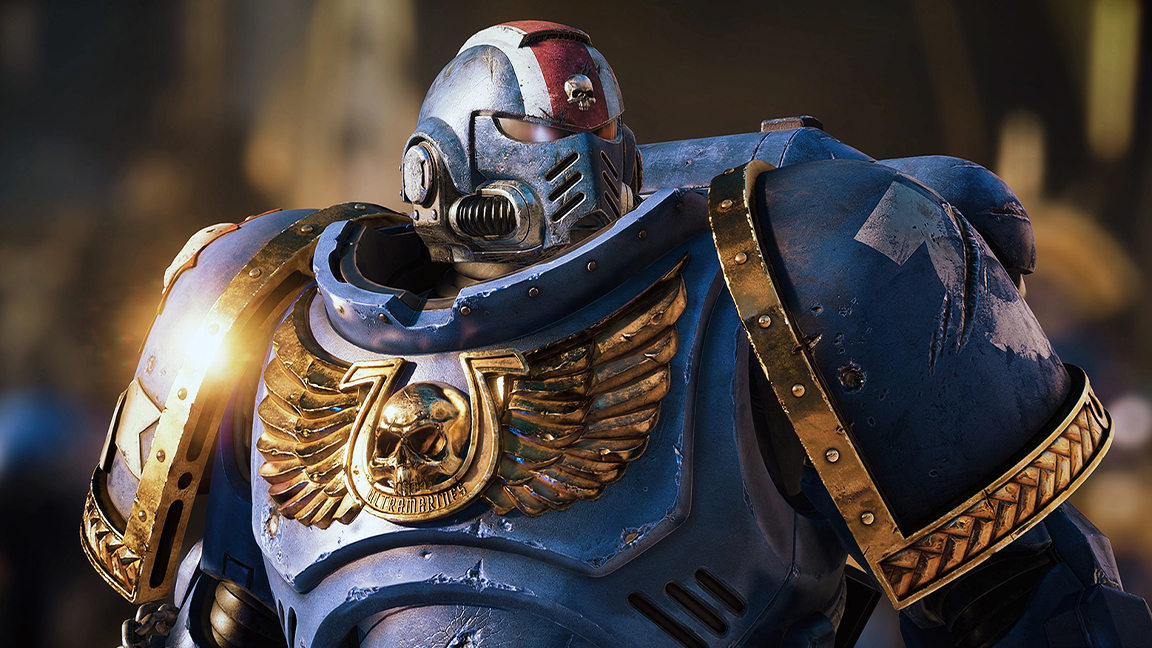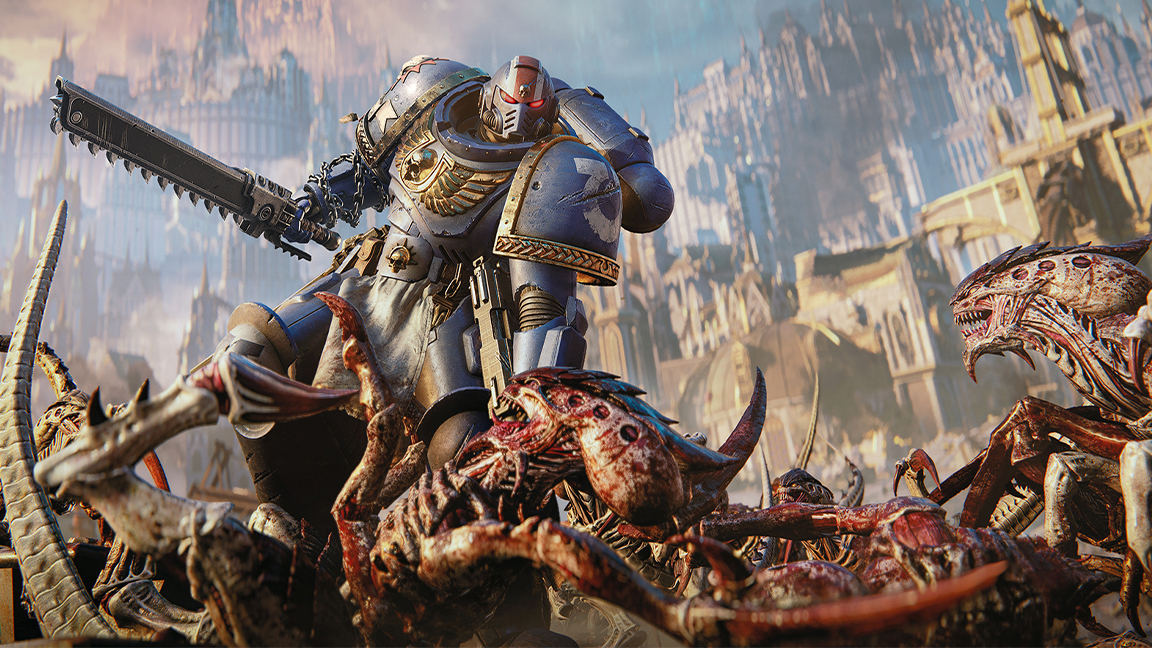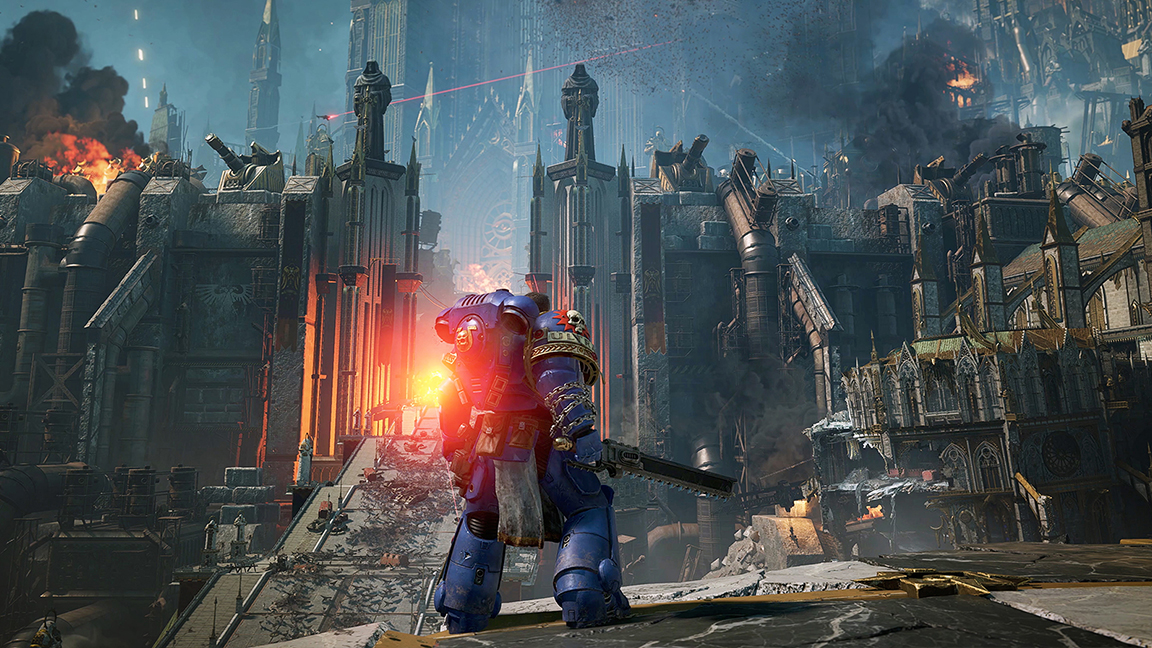
Warhammer 40,000: Space Marine 2 has been one of the year's breakout hit games for PC, PS5 and Xbox, which is a feat worth celebrating considering it released around hyped games like Star Wars Outlaws and Silent Hill 2.
What made this Games Workshop inspired shooter so successful? I touched on one key ingredient that made the grind of blasting alien hordes so much fun in my Warhammer 40,000: Space Marine 2 review, which highlighted the incredible levels of authenticity Sabre Interactive managed to reach.
But as game director Dmitry Grigorenko tells me in this interview, the game could have been even bigger, more epic. Development included experimenting with hundreds of thousands of enemies on screen.- maybe something for a PS5 Pro update? Below Dmitry reflects on what it took the game's artists to bring this hit to consoles and PC.
Space Marine 2 began with miniatures
Dmitry Grigorenko begins by explaining the process of making the game, starting at the beginning with the source material. "It all starts with an actual miniature," he tells me, explaining: "Our artists had miniatures for every character in the game."
He says: "[It] makes it easier to understand how it works when you can actually rotate the model with your own hands. Then we went with a prototype 3D model, which is slightly different from a miniature, but still pretty much the same."
Dmitry points out you can't simply implement the original miniature one-for-one. "You see, you can’t just scale up a miniature and put it in 3D. It will look bad because miniatures have hypertrophied proportions so they can look better on a tabletop, plus there are some production limitations preventing them from having finer details and so on," he says.

The process of getting the miniature into the game started with the creation of a prototype that the game's animation team could use as a test case. This is "the hardest part" reveals Dmitry, as in order to animate the character it needs proper anatomy.
Get the Creative Bloq Newsletter
Daily design news, reviews, how-tos and more, as picked by the editors.
"Some parts of the model can bend and some things can’t," he shares, explaining how there has to be enough room for the limbs to move around so the character can run and perform actions." Dmitry adds, "It’s a very fine balance between the miniature and something that can actually work in a video game."
It's no surprise to find Dmitry believes the playable Space Marines are his favourite part of the game's art direction. And his love for these hulking warriors isn't restricted to the models.
his game is about the power fantasy of being a Space Marine; every minor detail helped to build that power fantasy
Dmitry Grigorenko, game director, Sabre Interactive
He says: "I’m not talking only about models, which are fantastic in my opinion, it’s a combination of everything: models, textures, animations, visual effects, sound. The way the cloth moves when you run, the way it gets covered in blood in finisher animations. This game is about the power fantasy of being a Space Marine; every minor detail helped to build that power fantasy, and this is why people loved the game, I think."
That's quite something for a game that pushes the extremes of the Warhammer 40K universe - the gothic sci-fantasy architecture, the chaotic war zones and the sight of swarming Tyranids murmurations clouding the sky and attacking.
Reflecting on this Dmitry picks out the use of Sabre's proprietary game engine, the Swarm engine, that was first used to push hundreds of zombies around the screen in video game World War Z.
Building Space Marine 2's epic environments

Dmitry tells me there was a knock-on effect of being able to support hundreds of enemies, and that was a significant affect level design. He explains: "You need to have huge vistas featuring all these massive battles. Players must be able to see them in the background while fighting; this affects arena sizes, how they are positioned against each other [and more]."
Larger arenas also mean "longer and more boring walks" when you have dealt with all of the enemies, shares the game director. Anyone who's played Space Marine 2 will know these 'boring walks' are actually through strikingly beautiful and detailed environments that demand to be looked at.
"Our tech team was very passionate about pushing the enemy count to insane numbers. We had some tests with 100K animated simple AIs"
Dmitry Grigorenko, game director, Sabre Interactive
The game's sense of scale is what keeps you sure-footed within its world. The dramatic scale of the game was also one of the art team's biggest challenges. Dmitry tells me it's "easy to notice that everything is huge in this universe", after all the main character is a two-and-half metre tall, armoured walking gun, "But players need some sort of recognisable anchor to understand this scale".
He explains: "This is where seeing the Cadians comes in; human environments need to have human-size. It sounds obvious, yet in practice it’s very hard to find a proper balance because gameplay arenas need to allow for three 2.5-meter-tall marines doing all sorts of melee combos, and it’s hard to fill that kind of space with human-sized objects."

Another challenge was to make the architecture believable. "All those gothic spires needed to look like something that could be made with human hands. Just like in real life, even the largest buildings in the world are still made from bricks and concrete that humans manufacture and deliver," explains Dmitry. "Finding that 'brick' size in our game was challenging: you can’t go too real because that would be too small and will create all sorts of technical issues, but going too big will result in a wrong feeling of a fantasy miniature scaled up."
The challenges of building Space Marine 2's epic environments alongside the ambition for putting as many enemies on screen as possible needed walking back, to ensure balance and, well…not kill the artists.
"Our tech team was very passionate about pushing the enemy count to insane numbers. We had some tests with 100K animated simple AIs, and they pushed us to fit that in the game." reveals Dmitry. "Unfortunately, we were unable to do that because the level had to be absolutely crazy in terms of size."
Warhammer 40,000 Space Marine 2 is out now on all the best games consoles and PC.

Thank you for reading 5 articles this month* Join now for unlimited access
Enjoy your first month for just £1 / $1 / €1
*Read 5 free articles per month without a subscription

Join now for unlimited access
Try first month for just £1 / $1 / €1

Ian Dean is Editor, Digital Arts & 3D at Creative Bloq, and the former editor of many leading magazines. These titles included ImagineFX, 3D World and video game titles Play and Official PlayStation Magazine. Ian launched Xbox magazine X360 and edited PlayStation World. For Creative Bloq, Ian combines his experiences to bring the latest news on digital art, VFX and video games and tech, and in his spare time he doodles in Procreate, ArtRage, and Rebelle while finding time to play Xbox and PS5.
